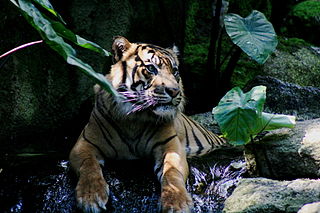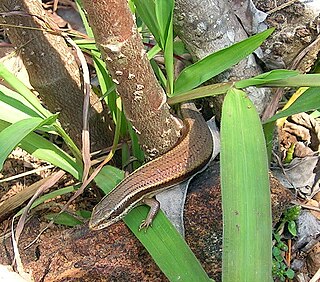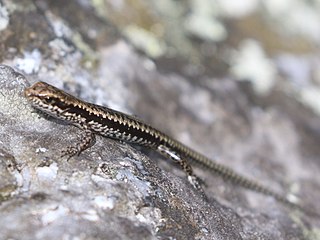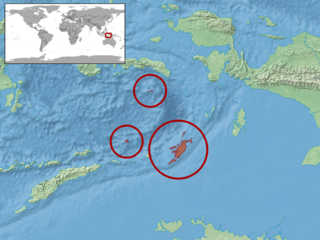
Eulamprus is a genus of lizards, commonly known as water skinks, in the subfamily Sphenomorphinae of the family Scincidae. The genus is native to Australia.

Lygosoma is a genus of lizards, commonly known as supple skinks or writhing skinks, which are members of the family Scincidae. Lygosoma is the type genus of the subfamily Lygosominae. The common name, writhing skinks, refers to the way these stubby-legged animals move, snake-like but more slowly and more awkwardly.

The genus Sphenomorphus – vernacularly also known as the common skinks – currently serves as a "wastebin taxon" for numerous skinks. While most or all species presently placed here are probably rather close relatives, the genus as presently delimited is likely to be not monophyletic and is in need of review. Some species in this genus have been moved to Pinoyscincus.

The fauna of Indonesia is characterised by high levels of biodiversity and endemicity due to its distribution over a vast tropical archipelago. Indonesia divides into two ecological regions; western Indonesia which is more influenced by Asian fauna, and the east which is more influenced by Australasian species.
Callulops kopsteini is a species of frog in the family Microhylidae. The species is endemic to Sanana Island, Indonesia.

Lygosominae is the largest subfamily of skinks in the family Scincidae. The subfamily can be divided into a number of genus groups. If the rarely used taxonomic rank of infrafamily is employed, the genus groups would be designated as such, but such a move would require a formal description according to the ICZN standards.
Felix Kopstein was an Austrian-Dutch physician and naturalist, known for his work in the field of herpetology.

Concinnia is a genus of skinks in the subfamily Lygosominae.
Sphenomorphus maindroni is a species of lizard in the family Scincidae. The species was originally described by Sauvage in 1879. According to the Catalogue of Life, the species Sphenomorphus maindroni does not have known subspecies.

Lepidodactylus oorti is a species of gecko, a lizard in the family Gekkonidae. The species is endemic to Indonesia.
Sphenomorphus darlingtoni is a species of skink, a lizard in the family Scincidae. The species is endemic to Papua New Guinea.
Lobulia brongersmai, also known as the Brongersma's lobulia, is a species of skink, a lizard in the family Scincidae. The species is endemic to the island of New Guinea.

Eremiascincus brongersmai, also known commonly as Brongersma's tree skink and the brown-sided bar-lipped skink, is a species of lizard in the family Scincidae. The species is endemic to the state of Western Australia.
Sphenomorphus cranei, also known commonly as Crane’s skink and Crane's forest skink, is a species of lizard in the family Scincidae. The species is endemic to the Solomon Islands.
Sphenomorphus derooyae is a species of skink, a lizard in the family Scincidae. The species is native to Oceania.
Sphenomorphus schultzei is a species of skink, a lizard in the family Scincidae. The species is endemic to Oceania.
Sphenomorphus zimmeri is a species of skink, a lizard in the family Scincidae. The species is endemic to Sulawesi, Indonesia.
Tropidophorus beccarii, also known commonly as Beccari's keeled skink and Beccari's water skink, is a species of lizard in the subfamily Lygosominae of the family Scincidae. The species is endemic to the island of Borneo.
Tytthoscincus hallieri is a species of skink, a lizard in the family Scincidae. The species is native to Southeast Asia.
Tytthoscincus ishaki, also known commonly as the Tioman Island forest skink, is a species of lizard in the family Scincidae. The species is endemic to Tioman Island in Malaysia.








